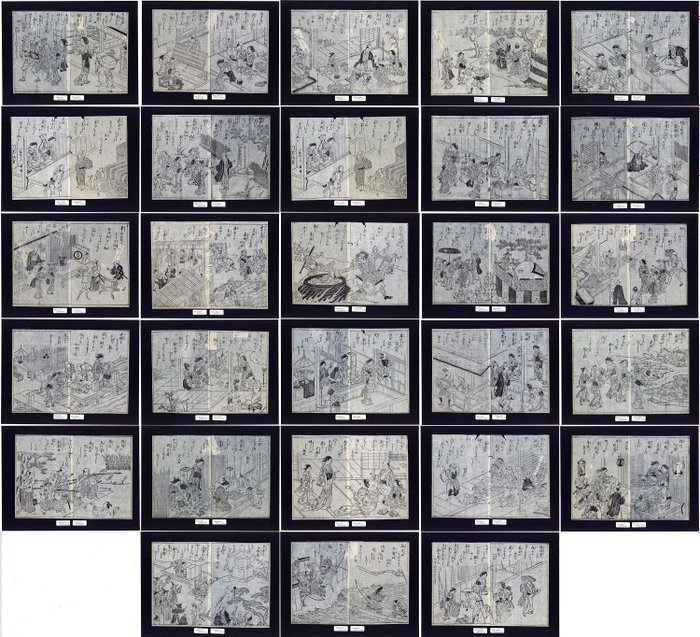
Sawamura Tanosuke as Oboshi Rikiya & Sawamura Tosshō as Honzo's Daughter Konami - 'Chūshingura' - - Utagawa Kunisada (1785-1865) - Japón - Periodo Edo (1600-1868)
N.º 81638949

N.º 81638949

Original shunga koban woodblock prints (28) - Nishikawa Sukenobu (1671-1750) - Japan - Early edo period (1700-30)
Nishikawa Sukenobu (西川 祐信, 1671 – August 20, 1750), often called simply "Sukenobu", was a Japanese printmaker from Kyoto. He was unusual for an ukiyo-e artist, as he was based in the imperial capital of Kyoto. He did prints of actors, but gained note for his works concerning women. His Hyakunin joro shinasadame (Appreciating 100 women), in two volumes published in 1723, depicted women of all classes, from the empress to prostitutes, and received favorable results.
Life and career
Hanging scroll by Nishikawa Sukenobu, c. 1700s.
Nishikawa Sukenobu was born in Kyoto in 1671 and studied painting there under Kanō Einō of the Kanō school of painting; he may also have studied under Tosa Mitsusuke of the Tosa school. Sukenobu's earliest known works are book illustrations that date to 1699; the earliest signed in his name is the seven-volume Shin Kanninki ("New patience story"). While most ukiyo-e artists were based in Edo (modern Tokyo), Sukenobu spent his career in Kyoto.
Sukenobu specialized in depictions of female beauties from different classes in their daily lives. He also produced books of kimono patterns, Musha-e portraits of warriors, illustrations of classical literature, and paintings.
Sukenobu died in Kyoto on 20 August 1750. He was also known under the names Uemon, Jitokusō, Jitokusai, Bunkado, Ukyō, Saiō. The influence of his style of depicting women is seen in the works of such artists as Suzuki Harunobu and Kitao Shigemasa.
Cómo comprar en Catawiki
1. Descubre algo especial
2. Haz la puja más alta
3. Paga de manera segura